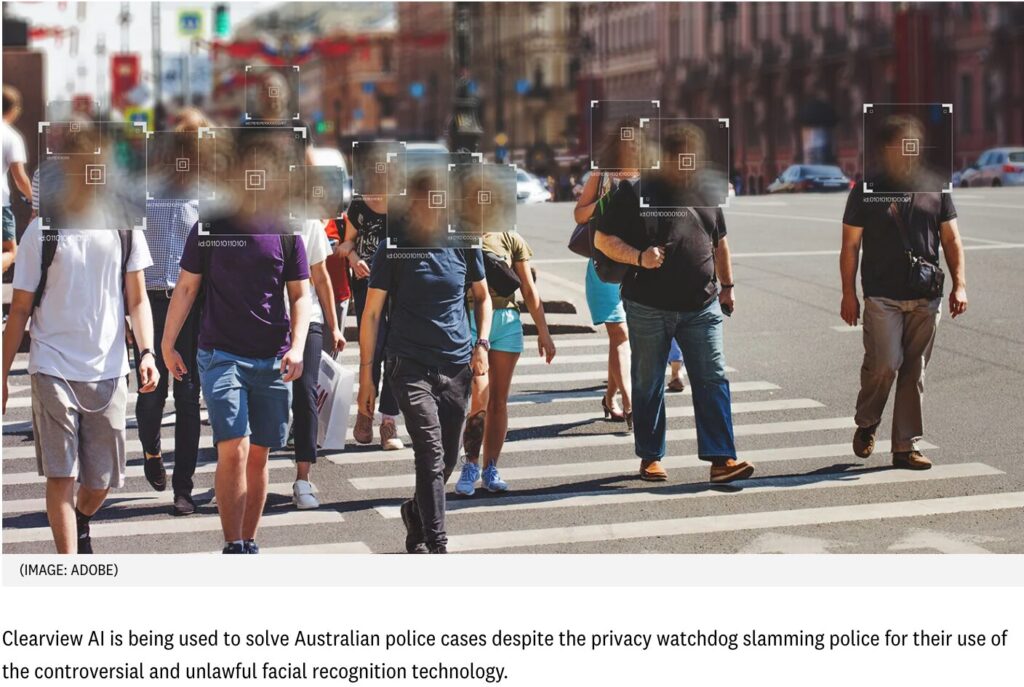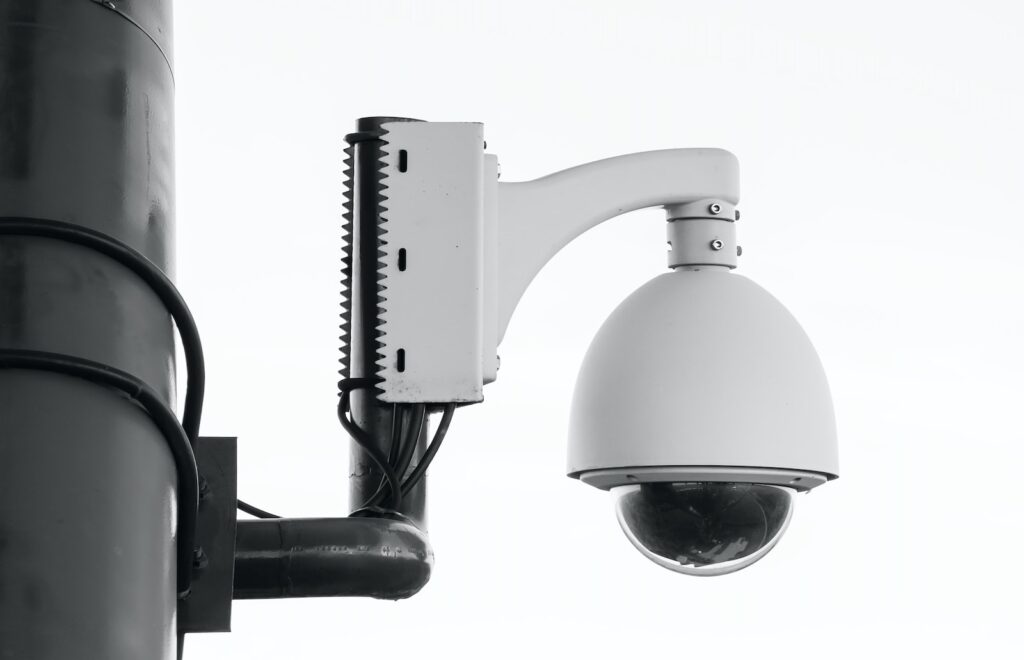Ai Transforming Security and Law Enforcement with Facial Recognition Technology

Facial recognition technology has surged from the realms of science fiction into a pivotal tool in our everyday lives, especially in enhancing security measures and bolstering law enforcement efforts. Powered by advancements like Google’s Face Recognition API, this technology is carving out a new era in public safety and investigative procedures, offering both unprecedented efficiency and new challenges.
Enhancing Public Safety and Efficiency
Real-Time Surveillance Analysis
The deployment of facial recognition in real-time surveillance represents one of the most significant leaps towards ensuring public safety. Imagine a scenario where cameras placed in strategic locations across a city can instantly identify individuals with a known history of criminal activity. Such a system could alert authorities within moments of a match, potentially preventing crime before it occurs. For instance, the use of facial recognition at the 2020 Tokyo Olympics provided a glimpse into how this technology can be utilized to safeguard mass gatherings, allowing for the swift identification of individuals of interest among the attendees.
Missing Persons Identification
Each year, thousands of missing persons reports are filed, with many cases remaining unsolved due to the sheer challenge of manual identification processes. Facial recognition technology can revolutionize this aspect by enabling the rapid scanning of images and videos from social media, surveillance footage, and public databases to identify missing individuals. A poignant example of this application’s potential was demonstrated in New Delhi, India, where over 3,000 missing children were identified in just four days using a facial recognition system.
Access Control Systems
The importance of secure access control systems cannot be overstated in today’s security-conscious world. Facial recognition technology enhances these systems by offering a seamless, non-intrusive method of verifying identities, significantly reducing the risk of unauthorized access. High-security facilities, including data centers and research labs, are increasingly adopting facial recognition for access control, highlighting its reliability and efficiency.
Crowd Monitoring
Large public events pose significant security challenges, from potential terrorist threats to the risk of stampedes. Facial recognition technology can assist in crowd monitoring by analyzing footage in real time to spot known threats or individuals exhibiting suspicious behavior. Furthermore, it can aid in finding lost individuals, such as children separated from their parents in a crowded festival, demonstrating a compassionate application of this powerful technology.
Streamlining Law Enforcement Operations
Border Control Authentication
The use of facial recognition at border controls enhances the efficiency of customs and immigration processes without compromising security. Automated passport control kiosks, equipped with facial recognition technology, have been implemented in airports around the world, significantly reducing wait times while ensuring a high level of security by accurately matching individuals with their passport photos.
Prison Security
Facial recognition can play a crucial role in maintaining order and safety within prisons. By monitoring inmate movements and identifying unauthorized individuals, this technology can prevent escapes and unauthorized entry, ensuring the safety of both inmates and staff. The integration of facial recognition into prison surveillance systems marks a significant step forward in modernizing correctional facility management.
Ethical Considerations and Challenges
While the benefits of facial recognition in security and law enforcement are clear, its deployment raises significant ethical questions and privacy concerns. The potential for mass surveillance and the erosion of anonymity in public spaces are issues that society must grapple with as this technology becomes increasingly pervasive.
Balancing Innovation with Ethics
The key to responsibly leveraging facial recognition technology lies in finding a balance between innovation and ethical considerations. Regulatory frameworks that govern the use of this technology are essential to ensure it is employed in a manner that respects individual privacy and rights while safeguarding public interest. Transparent policies and public oversight can help build trust in these systems, ensuring they are used for the benefit of society.
Addressing Privacy and Bias
Protecting privacy in the age of facial recognition requires stringent data protection measures and clear consent mechanisms. Additionally, addressing algorithmic bias is critical to prevent discriminatory practices. Ongoing research and development, coupled with diverse training data, are vital in mitigating these issues, ensuring facial recognition technology serves all segments of society fairly.
The Future of Facial Recognition in Security and Law Enforcement
As we look to the future, the role of facial recognition in security and law enforcement will undoubtedly expand, driven by technological advancements and the increasing sophistication of threats. However, its success and societal acceptance will hinge on the ability to navigate the ethical dilemmas and privacy concerns it raises.
Collaboration between technology developers, law enforcement agencies, policymakers, and civil society will be paramount in shaping the responsible use of facial recognition technology. By fostering a dialogue that prioritizes ethical considerations and transparency, we can harness the potential of facial recognition to create a safer, more secure world while respecting individual rights and freedoms.
FAQ: Facial Recognition Technology in Security and Law Enforcement
1. What is facial recognition technology?
Facial recognition technology is a form of biometric software that can identify or verify a person’s identity using their face. It captures, analyzes, and compares patterns based on the person’s facial details.
2. How is facial recognition used in law enforcement?
Law enforcement agencies use facial recognition for various purposes, including identifying suspects by comparing their images with databases of known criminals, finding missing persons by scanning through video footage or images, and enhancing security measures at borders or in sensitive areas.
3. Can facial recognition technology prevent crimes?
Yes, facial recognition can potentially prevent crimes by identifying known criminals or suspects in public spaces, enabling law enforcement to intervene before a crime is committed. Real-time surveillance with facial recognition can alert authorities to the presence of individuals of interest.
4. Is facial recognition technology reliable?
While highly effective, facial recognition technology is not infallible. Its accuracy can be affected by factors such as image quality, lighting conditions, and changes in appearance. However, continuous advancements in technology are improving its reliability.
5. What are the ethical concerns with facial recognition in security?
Ethical concerns include privacy invasion, the potential for mass surveillance, and the risk of misidentification. There’s also worry about bias in facial recognition systems, where algorithms might not accurately recognize faces from various racial and ethnic backgrounds, leading to discriminatory practices.
6. How are privacy concerns addressed with facial recognition technology?
To address privacy concerns, many countries and regions are implementing strict regulations governing the use of facial recognition. These include obtaining consent from individuals, limiting the storage of facial data, and ensuring transparency in how the data is used.
7. What measures are taken to prevent bias in facial recognition systems?
Preventing bias involves using diverse datasets for training algorithms and continuous testing for fairness and accuracy across different demographics. Many organizations are also adopting ethical guidelines for AI development, including facial recognition.
8. How is facial recognition technology regulated?
Regulation varies by country and region, but it often involves guidelines on data protection, consent, and the ethical use of AI. Some places have specific laws governing the use of facial recognition by public authorities and private entities.
9. Can individuals opt-out of facial recognition in public places?
Opting out of facial recognition in public spaces can be challenging, as it depends on the local laws and the specific implementations of the technology. In some cases, public awareness and advocacy have led to the establishment of “no surveillance” zones or opt-out provisions.
10. What’s the future of facial recognition technology in law enforcement?
The future will likely see more sophisticated and accurate facial recognition technologies, with improved safeguards against misuse. There’s a growing emphasis on ethical AI development, which will shape how facial recognition is integrated into law enforcement, balancing security needs with privacy and civil liberties.

